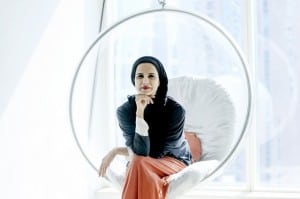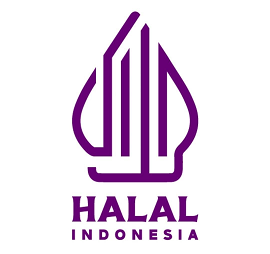By Rebecca McLaughlin-Duane – The National

Islamic fashion and the global hijab culture are rapidly evolving. Leading the charge of the style movement are cosmopolitan Muslim women in their 20s and 30s. Alia Khan is one of them. Khan, who recognised the need for a platform to service and support the burgeoning sector and its designers, established the Islamic Fashion & Design Council (IFDC) in Dubai last year – the only organisation of its kind in the world. In the wake of World Hijab Day on February 1, we caught up with Khan for a closer look at the modest but modern clothing industry.
What prompted you to set-up the IFDC?
The 2014-15 Thomson Reuters State of the Global Islamic Economy Report forecasts that expenditure on Muslim clothing will reach US$488 billion (Dh1.8 trillion) by 2019. That’s no joke – it’s a huge industry. And yet there has been no council to provide the platform necessary on a global scale. Until now.
What are your priorities for the council this year?
We’re launching some events designed to encourage commerce for the industry players. We have great creativity in this space but we need the brands to develop revenue cycles, grow as companies and be sustainable. Another part is content; there is lots of information out there, bloggers and social-media activity – and it’s all wonderful, we love it. We just want to culminate that into more sophisticated platforms. The third thing is collaborations in the form of global summits, forums or conferences.
Define Islamic fashion.
One thing I must make clear is that we are not a religious council. We’re not here to tell you what is and isn’t “Islamic fashion”. What I can tell you is that there’s a huge Islamic fashion market and a huge consumer base of Muslims that would like to adhere to the Islamic lifestyle. They like to live within the parameters of what their ideology tells them is Islamic – and they also like to live large. Remember that the global Muslim population is the second-largest in the world and when you factor in that more than 60 per cent is under 30, we have the largest youth population that’s growing at an alarming rate. We don’t dictate what “Islamic fashion” is, but generally speaking, it’s covering the hair, it’s modest wear with the arms and legs covered, too. That does not discourage being stylish, looking professional or choosing colours other than black. There are a lot of myths being dispelled by our presence and when we speak at public forums we underline that there are a vast range of options.
Does the council also cater to non-Muslims who favour conservative dress for cultural, religious or personal reasons?
Yes, we do have a secondary market. There are a lot of other consumers that come to Islamic fashion boutiques and shop online because they can’t find the appropriate wear to go to church in, for example. That market is growing, which is exciting.
Are there identifiable trends in Islamic fashion?
That’s a good question because what’s interesting about the nature of our consumers and designers is that they don’t encourage trends. They feel it’s against the spirit of creativity. So we try to discourage looking at forecasts; we have fun with fashion, of course, but we keep things broad by saying “individuality is in”, instead of talking colours or hemlines.
Many celebrities, from Jennifer Lopez to Paris Hilton, have visited the UAE and chosen to wear abayas, shaylas, turbans and conservative creations by regional designers. To be encouraged, in your opinion?
Oh, yes, it’s lovely. The draped scarf look – the style of the hijab – is, after all, iconic. We’ve seen it on everyone from Audrey Hepburn to Grace Kelly and even before them. It definitely makes a woman more elegant and sophisticated; all that we might be going for as a fashion statement. So, we encourage the wearing of it, not least because it can be a wonderful touch to an otherwise common look. By adding a headscarf to a black dress you’ve taken it up a few notches. It’s beautiful.
What about those who didn’t get the “conservative but creative” look right? Lady Gaga’s arrival in Dubai in a transparent kaftan and nude body suit, for example.
I think with Lady Gaga – or Rihanna for that matter – some celebrities do like to be daring and don’t mind potentially offending others. Although this may not be their intention, anyone in this market would obviously not appreciate their “look” as they weren’t really adhering to modest wear. When coming to this region, they would have known that dressing modestly was a cultural thing; therefore, their approach didn’t seem entirely sincere or respectful of the local culture.
Is there room for a crossover with mainstream fashion in the region? Would you welcome a dedicated Islamic Zara or Islamic Mango for example?
Absolutely. And I think you’re going to see it. There are some very sophisticated people in the fashion retail space right now, who have gone to the drawing board and come up with new concepts. The council has been called in to consult on a few meetings for such projects and you’re going to see some great collections coming up.
Enlighten me about Islamic fashion for men. Is it an underserved market?
To be fair, we haven’t expanded on it at the council yet because the demand was so strong on the women’s side. That said, we are working on some menswear initiatives. Men’s Islamic fashion tends to be more on the simple side, apart from very contemporary designs, which are heavy on the brocade and handwork to the neckline and cuffs – gorgeous. It’s wonderful that there’s a demand for it and we get a lot of requests about it. We think the men have waited long enough for direction about how and where to shop, so we’re researching that, doing our due diligence about the best established and new designers.
What’s the biggest misconception about Islamic fashion?
When you look at what’s happening in France, for example, the biggest qualm is that it “oppresses women”. If it oppresses women, that begs the question: “Why are so many women wearing it?” Oppression is done by force, when choice is removed, which is the opposite of the growing movement of Muslim women under 30 who are choosing to wear the hijab. They’re wearing Islamic fashion in an extremely stylish way – evidence of which you can see everywhere from New York to London to Doha to Mumbai. I’d say that some people might be wiser to capture this market rather than repel it. If designers were encouraged to understand the profile of this consumer better, they would love this consumer. It would be a win-win situation if we could all just get along and appreciate each other’s differences.
Alia Khan biog
• Born in Pakistan, raised in Canada and the United States
• Established a media and marketing company in Los Angeles in 2000
• Moved to the UAE in 2005 and started producing fashion lines and industry shows
• Furthered her Islamic studies in Jordan at Amman’s Qasid Institute in 2011
• Philanthropy and Islamic charity work became a priority in 2005
• Involved herself in education and food programmes in Pakistan in 2012
• Founded the Islamic Fashion and Design Council in 2014



